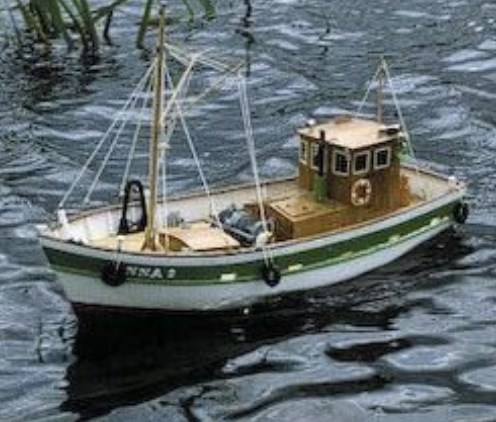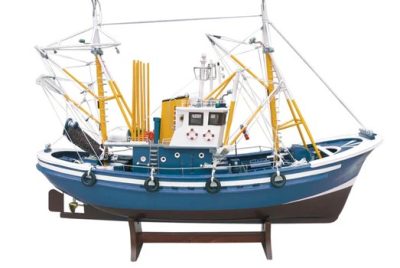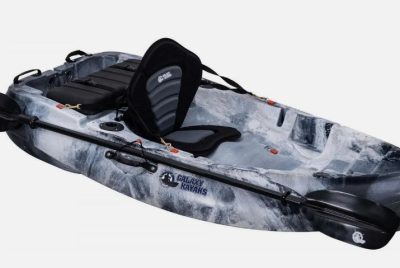Little Fishing Boats
Introduction
Have you ever imagined the tranquility of casting your line into the water from a small, nimble boat? Little fishing boats have a unique charm and practicality that can transform your fishing experience. They offer accessibility, ease of use, and a closer connection to the water. Whether you’re a seasoned angler or just getting started, choosing the right little fishing boat can make all the difference.
Types of Little Fishing Boats

When it comes to little fishing boats, you have several options to choose from. Each type has its advantages, depending on your fishing needs and preferences.
Jon Boats
Jon boats are a popular choice for their stability and versatility. They have a flat-bottom design, making them ideal for calm waters like lakes and slow-moving rivers. Their wide, open design provides plenty of space for gear and is perfect for both solo and group fishing trips.
Kayaks and Canoes
For those who love paddling, kayaks and canoes are excellent options. They allow you to navigate narrow waterways and get closer to your fishing spots. Fishing kayaks, in particular, come equipped with rod holders, storage compartments, and even comfortable seating.
Inflatable Fishing Boats
If storage space is a concern, inflatable fishing boats are a great solution. These boats are lightweight, easy to transport, and can be quickly inflated at your fishing site. Despite their portability, modern inflatables are durable and stable enough for a successful fishing trip.
Dinghies
Dinghies, often used as tenders for larger boats, also serve well as fishing vessels. They are typically small, sturdy, and can be rowed or fitted with a small outboard motor. Dinghies are ideal for fishing in both freshwater and coastal areas.
Choosing the Right Little Fishing Boat
Selecting the perfect little fishing boat depends on several factors, including where you plan to fish and your personal preferences.
Factors to Consider
Consider the type of water you’ll be fishing in—calm lakes, fast rivers, or coastal areas. Your choice will influence the boat’s size, stability, and type. Also, think about how often you’ll be using the boat and your storage options at home.
Best Boat for Different Fishing Environments
For calm lakes, Jon boats and kayaks are fantastic. If you’re navigating narrow or fast-moving waters, kayaks and canoes are better suited. Inflatable boats work well for those who need portability, and dinghies are versatile enough for various environments.
Materials and Durability
When it comes to materials, durability is key. Here are the main types to consider:
Aluminum vs. Fiberglass
Aluminum boats are lightweight, durable, and require minimal maintenance. They’re great for both freshwater and saltwater fishing. Fiberglass boats, on the other hand, offer better aesthetics and can be molded into more complex shapes, providing better performance and comfort.
Inflatable Materials

High-quality inflatable boats use durable materials like PVC or Hypalon. These materials are resistant to punctures and abrasions, ensuring your boat lasts for many fishing trips.
Size and Capacity
The size of your boat will depend on how many people you plan to take fishing and the amount of gear you need to carry.
Single vs. Multiple Passengers
If you usually fish alone, a small kayak or one-person Jon boat is sufficient. For family or group outings, consider larger boats with more seating capacity and space for gear.
Storage Capacity
Look for boats with ample storage compartments to keep your fishing gear organized. Rod holders, tackle boxes, and dry storage areas are essential for a smooth fishing experience.
Power Options
The power source for your boat can affect its convenience and https://dictionary.cambridge.org/dictionary/english/performance.
Rowing and Paddling
Kayaks, canoes, and small Jon boats can be rowed or paddled, offering a quiet and environmentally friendly fishing experience.
Motorized Options
For more speed and less physical effort, motorized options are available. You can choose between electric and gas engines, depending on your preference for quiet operation or more power.
Electric vs. Gas Engines
Electric motors are quiet, eco-friendly, and perfect for small lakes and ponds. Gas engines provide more power and are suitable for larger bodies of water and longer distances.
Essential Features to Look For
When shopping for a little fishing boat, there are several key features to consider.
Comfort and Seating
Ensure the boat has comfortable seating, especially if you plan to spend long hours fishing. Adjustable seats with back support can make a big difference.
Storage Compartments

Look for boats with built-in storage compartments to keep your gear organized and easily accessible. Dry storage areas are crucial for keeping your valuables safe.
Rod Holders and Mounts
Rod holders and mounts are essential for hands-free fishing and keeping your rods secure. Many boats come with these features built-in, or you can add them yourself.
Safety Considerations
Safety should always be a priority when heading out on the water.
Life Jackets and Flotation Devices
Always have enough life jackets for everyone on board. Even if you’re a strong swimmer, a life jacket is a must for safety.
Emergency Kits
Carry an emergency kit with essentials like a first aid kit, flashlight, whistle, and multi-tool. It’s better to be prepared for any situation.
Stability and Balance
Ensure your boat is stable and well-balanced to prevent tipping. Wider boats tend to be more stable, making them safer for fishing.
Transport and Storage
Transporting and storing your little fishing boat should be convenient.
Trailer Options
For larger boats, a trailer is essential for transport. Make sure the trailer is compatible with your vehicle and has the necessary safety features.
Roof Racks and Car Toppers
Smaller boats, like kayaks and canoes, can be transported on roof racks or car toppers. Ensure they’re securely fastened to avoid accidents.
Storing at Home
Store your boat in a dry, sheltered place to protect it from the elements. Inflatable boats should be deflated and stored in a cool, dry place.
Maintaining Your Little Fishing Boat
Regular maintenance keeps your boat in top condition.
Regular Cleaning and Inspection

Clean your boat after each use, especially if it’s been in saltwater. Inspect it regularly for any signs of wear and tear.
Repairing Minor Damages
Address minor damages promptly to prevent them from becoming major issues. Patch holes, tighten loose bolts, and replace worn parts as needed.
Winterizing Your Boat
If you live in a cold climate, winterize your boat to protect it during the off-season. This includes draining water, adding antifreeze, and storing it properly.
Cost and Budgeting
Understanding the costs involved helps you budget effectively.
Initial Purchase Price
Little fishing boats can range from a few hundred to several thousand dollars. Set a budget based on your needs and stick to it.
Maintenance Costs
Factor in the cost of maintenance, repairs, and accessories. Regular upkeep can save you money in the long run.
Finding Deals and Discounts
Look for sales, discounts, and second-hand options to save money. Online marketplaces and local classifieds can offer great deals.
Popular Brands and Models
Certain brands and models stand out for their quality and reliability.
Top Manufacturers
Brands like Old Town, Pelican, and Intex are known for their durable and well-designed fishing boats.
Recommended Models
Models like the Old Town Sportsman, Pelican Bass Raider, and Intex Excursion Pro are popular choices among anglers.
Fishing Gear and Accessories
Equip your boat with the right gear for a successful fishing trip.
Must-Have Fishing Equipment

Essential gear includes fishing rods, tackle boxes, bait, and a fishing net. A cooler for your catch and drinks is also handy.
Optional Accessories for Comfort
Consider adding accessories like cushioned seats, cup holders, and sunshades for added comfort during your trips.
Benefits of Little Fishing Boats
Little fishing boats offer several advantages over larger vessels.
Accessibility and Ease of Use
They’re easy to launch, maneuver, and transport. You can reach fishing spots that larger boats can’t access.
Cost-Effectiveness
They’re more affordable than larger boats and have lower maintenance costs.
Versatility in Different Waters
Little fishing boats can be used in a variety of water environments, from calm lakes to coastal waters.
Challenges and How to Overcome Them
Every boat has its challenges, but they can be managed.
Common Issues Faced
Issues like limited space, stability, and exposure to the elements are common.
Tips and Solutions
Use space-saving gear, enhance stability with outriggers, and protect yourself with proper clothing and gear.
Real-Life Experiences and Stories
Personal experiences can provide valuable insights.
Personal Anecdotes
I’ve had many memorable fishing trips in my little Jon boat. One of the best was a peaceful morning on a secluded lake, catching bass after bass.
Success Stories from Other Anglers

Many anglers share their success stories online, offering tips and inspiration. Reading these can motivate you to get out on the water.
Conclusion
Little fishing boats offer a unique and rewarding way to enjoy fishing. They’re affordable, versatile, and provide a closer connection to nature. Whether you’re a beginner or an experienced angler, there’s a little fishing boat that’s perfect for you. So, why wait? Grab your gear and head out for your next fishing adventure!
FAQs
1. What is the best little fishing boat for beginners?
For beginners, a stable and easy-to-use boat like a Jon boat or a fishing kayak is ideal.
2. How do I transport my little fishing boat?
Transport options include trailers for larger boats and roof racks or car toppers for smaller ones.
3. Can I add a motor to my little fishing boat?
Yes, many little fishing boats can be fitted with electric or gas motors for added convenience.
4. What are the maintenance requirements for a little fishing boat?
Regular cleaning, inspection, and minor repairs are key. Winterizing is necessary if you live in a cold climate.
5. Where can I find the best deals on little fishing boats?
Check online marketplaces, local classifieds, and sales at outdoor or sporting goods stores for the best deals.




